Let’s Copy How Finland, South Korea, and Canada Teach Science
Lessons from teachers whose countries excel at science education.
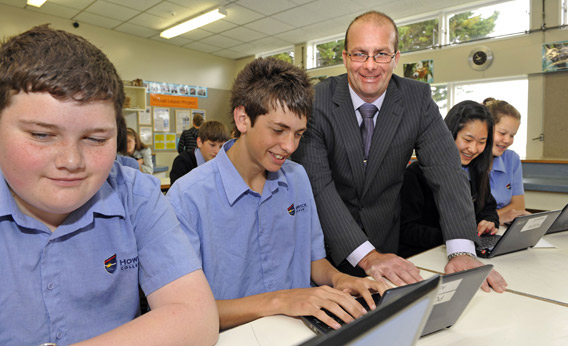
Courtesy of Steve Martin.
Read more from Slate's special issue on science education and give us your best ideas for raising the next generation of scientists and engineers.
Take the 2009 PISA test, which assessed the knowledge of students from 65 countries and economies—34 of which are members of the development organization the OECD, including the United States—in math, science, and reading. Of the OECD countries, the United States came in 17th place in science literacy; of all countries and economies surveyed, it came in 23rd place. The U.S. score of 502 practically matched the OECD average of 501. That puts us firmly in the middle. Where we don’t want to be.
What do the leading countries do differently? To find out, Slate asked science teachers from five countries that are among the world’s best in science education—Finland, Singapore, South Korea, New Zealand, and Canada—how they approach their subject and the classroom. Their recommendations: Keep students engaged and make the science seem relevant.
Finland: “To Make Students Enjoy Chemistry Is Hard Work”
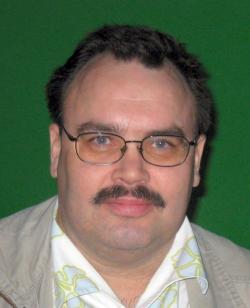
Courtesy of Ari Myllyviita.
Finland was first among the 34 OECD countries in the 2009 PISA science rankings and second—behind mainland China—among all 65 nations and economies that took the test. Ari Myllyviita teaches chemistry and works with future science educators at the Viikki Teacher Training School of Helsinki University.
Finland’s National Core Curriculum is premised on the idea “that learning is a result of a student’s active and focused actions aimed to process and interpret received information in interaction with other students, teachers and the environment and on the basis of his or her existing knowledge structures.”
My conception of learning lies strongly on this citation from our curriculum. My aim is to support knowledge-building, socioculturally: to create socially supported activity in student’s zone of proximal development (the area where student need some support to achieve next level of understanding or skill). The student’s previous knowledge is the starting point, and then the learning is bound to the activity during lessons—experiments, simulations, and observing phenomena.
The National Core Curriculum also states, “The purpose of instruction in chemistry is to support development of students’ scientific thinking and modern worldview.” Our teaching is based on examination and observations of substances and chemical phenomena, their structures and properties, and reactions between substances. Through experiments and theoretical models, students are taught to understand everyday life and nature. In my classroom, I use discussion, lectures, demonstrations, and experimental work—quite often based on group work. Between lessons, I use social media and other information communication technologies to stay in touch with students.
In addition to the National Core Curriculum, my school has its own. They have the same bases, but our own curriculum is more concrete. Based on these, I write my course and lesson plans. Because of different learning styles, I use different kinds of approaches, sometimes theoretical and sometimes experimental. Always there are new concepts and perhaps new models to explain the phenomena or results.
To make students enjoy learning chemistry is hard work. I think that as a teacher, you have to love your subject and enjoy teaching even when there are sometimes students who don´t pay attention to you. But I get satisfaction when I can give a purpose for the future by being a supportive teacher.
Singapore: How One Country Transformed Its Science Education
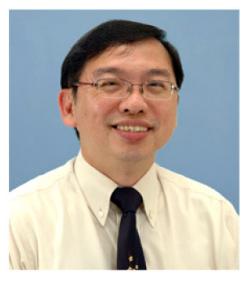
Courtesy of Charles Chew.
Singapore placed fourth out of 65 in the 2009 PISA science education assessment. Dr. Charles Chew is a principal master teacher (physics) with the Academy of Singapore Teachers. Since joining the education service in 1986, he has been a junior college lecturer, head of science and vice principal of a secondary school, and a teaching fellow at the National Institute of Education.
As a science teacher in Singapore, I have witnessed the successful transformation of science education over the last few decades and attribute this to three key factors:
- a systematic and systemic approach to curriculum planning and development to ensure that our focus is future-relevant
- a strong and connected community of curriculum planners, education experts, and school teachers toward enabling the curriculum in context, and
- a commitment to developing a strong teaching force.
Singapore has come a long way in education. In the 1960s, the young nation had to tackle the urgent task of educating the population for a newly industrializing economy. Today, we have a highly customized education system that aims to prepare our young people for a future with exciting scientific developments and increasing uncertainties. Our curriculum is intended to encourage the betterment of society, acquisition of subject matter knowledge, the individual personal development, and thinking skills. This balance is to ensure that our school curriculum is future-relevant, focusing on developing holistic and future-ready competencies in our students.
As education evolves to meet the needs of the country’s citizenry, so has the focus of science education. A renewed emphasis on making science education more “inquiry-centric” has led to a revised Science Curriculum Framework for Singapore in 2008. In a nutshell, the inquiry approach encourages our students to ask questions about things they see around them and to maintain that curiosity, which will enable them to continue learning even after they leave school.
Invariably, students walk away from my class being more inquisitive and more observant of the world around them.
A sound curriculum framework is a necessary but not sufficient condition for success. Our teachers play a critical role in enacting the science curriculum in the classroom. This is because the interface between the curriculum and the students is the teacher who breathes life into the educational process. Deepening the teachers’ professional practices also aids us in building strong connected communities with local and overseas partners. As a Master Teacher in Science, I work closely with experts from the National Institute of Education (our teacher training college), school teachers, and specialist groups such as the Singapore Science Centre and professional associations to expand the learning opportunities for our teachers to ensure that teachers are kept up-to-date in their professional practice.
South Korea: “Scores Don’t Guarantee Happiness or Success at the Graduate Level”
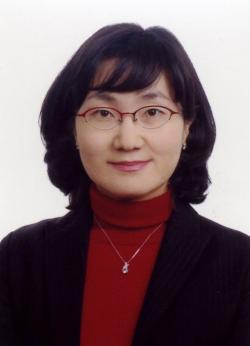
Courtesy of Soojin Lim.
South Korea came in sixth place out of 65 in the 2009 PISA assessment. Soojin Lim teaches biology at Hansung Science High School in Seoul.
In Korea, students, teachers, and parents firmly believe that fostering experts in science and technology is essential to national competitiveness in the 21st century. The importance of science education is reflected in the number of public science high schools in my country. There are 20 science high schools and four science academies for the gifted, which are all geared toward gifted education in math and science. Also, there are more than 100 science-centered high schools nationwide, which provide students with an in-depth science curriculum and laboratories to support and encourage science education.
I believe the strength of our science education comes from enthusiastic teachers who are dedicated and qualified. The Ministry of Education, Science, and Technology and Seoul Metropolitan Office of Education have strived to strengthen teachers’ competency, supporting professional development through science in-service programs. These include online courses held year-round. I was supported by both MEST and SMOE in 2005 and was able to study at the University of Virginia for my master’s degree in gifted education.
As a biology teacher at Hansung Science High School in Seoul, the curriculum is flexible, so I have been able to build my own. This is an exceptional situation, as many general high schools in Korea have a more rigid curriculum to cover the material on national standardized tests. The goals of my classes are to assist students in motivating themselves, to relate biology topics to the real world, and to nurture the ability to inquire by challenging students.
Korean students generally spend quite a lot of time studying concepts and principles rather than hands-on activities at the secondary level, even reviewing at home and on weekends. This is a way of obtaining knowledge in a short time and probably contributes to high math and science test scores, but the scores don’t guarantee happiness or success at the graduate level. Personally, I believe that even though hands-on experiments like those emphasized at my school take longer to show student achievement, they will pay off in the long run. In my opinion, learning concepts and principles is as important as learning through hands-on activities.
Last year, I taught a weekly two-hour biology lab. Approximately 20 percent of that time was spent lecturing, and 80 percent was spent doing self-designed experiments, discussing, presenting, and occasionally debating. This year, however, I teach advanced biology to seniors, so students have a two-hour lecture to prepare for the university entrance exam. As a teacher, I feel rewarded when students say that various activities and study materials in my class enable them to explore and connect a topic to their daily lives. It’s amazing when students find studying science fascinating and exciting.
New Zealand: “Students Disengage When a Teacher Is Simply Repeating Facts or Ideas”
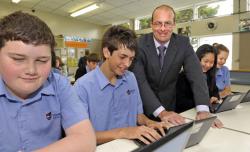
Courtesy of Steve Martin.
New Zealand came in seventh place out of 65 in the 2009 PISA assessment. Steve Martin is head of junior science at Howick College. In 2010, he received the prime minister’s award for science teaching.
Science education is an important part of preparing students for their role in the community. Scientific understanding will allow them to engage in issues that concern them now and in the future, such as genetically modified crops. In New Zealand, science is also viewed as having a crucial role to play in the future of the economic health of the country. This can be seen in the creation of the “Prime Minister’s Science Prizes,” a program that identifies the nation’s leading scientists, emerging and future scientists, and science teachers.
The New Zealand Science Curriculum allows for flexibility depending on contextual factors such as school location, interests of students, and teachers’ specialization. The curriculum has the “Nature of Science” as its foundation, which supports students learning the skills essential to a scientist, such as problem-solving and effective communication. The Nature of Science refers to the skills required to work as a scientist, how to communicate science effectively through science-specific vocabulary, and how to participate in debates and issues with a scientific perspective.
School administrators support innovation and risk-taking by teachers, which fosters the “let’s have a go” attitude. In my own classroom, I utilize computer technology to create virtual science lessons that support and encourage students to think for themselves and learn at their own pace. Virtual Lessons are Web-based documents that support learning in and outside the classroom. They include support for students of all abilities by providing digital resources targeted at different levels of thinking. These could include digital flashcards that support vocabulary development, videos that explain the relationships between ideas or facts, and links to websites that allow students to create cartoon animations. The students are then supported by the use of instant messaging, online collaborative documents, and email so they can get support from their peers and myself at anytime. I provide students with various levels of success criteria, which are statements that students and teachers use to evaluate performance. In every lesson I provide the students with three different levels of success criteria, each providing an increase in cognitive demand. The following is an example based on the topic of the carbon cycle:
I can identify the different parts of the carbon cycle.
I can explain how all the parts interact with each other to form the carbon cycle.
I can predict the effect that removing one part of the carbon cycle has on the environment.
These provide challenge for all abilities and at the same time make it clear what students need to do to be successful. I value creativity and innovation, and this greatly influences the opportunities I provide for students.
My students learn to love to be challenged and to see that all ideas help develop greater understanding. Students value the opportunity to contribute to others’ understanding, and they disengage when a teacher is simply repeating facts or ideas.
I have written a book which outlines my philosophy in more detail. It is called Using SOLO as Framework for Teaching: A Case Study in Maximising Achievement in Science.
Canada: “Science Teachers Like Me Often Feel We Are off the Radar”
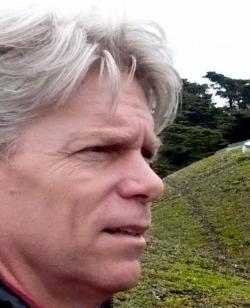
Courtesy of Rick Pardo.
Canada came in eighth place out of 65 in the 2009 PISA assessment. Rick Pardo is a learning coordinator for 7-12 science for the Thames Valley District School Board in Ontario.
The Ontario education system conducts province-wide tests in reading, writing, and mathematics for primary, junior, and secondary students. Science is not part of the standardized testing, and science teachers like me often feel that we are off the radar. The strength of our science programs comes from the dedication and enthusiasm of qualified teachers.
Scientific literacy is critical to the continued innovation and ultimate survival of our species. The scientifically literate will control technology—the scientifically illiterate will be controlled.
I believe education should empower students rather than control them. Put education in the hands of learners, and you change the way the world works. Instead of providing a detailed set of written instructions, each experiment is modeled. Students make detailed observations and then replicate the basic experiment and its results. It is amazing to see students’ attention to detail with this approach. Once students master the basic protocol (with consistent results), they are ready to ask their own questions, make their own predictions, and modify variables.
In my classes, students don’t just design and conduct experiments. They also support and refute opinions, build prototypes, and solve messy problems. I recently took advantage of a national election to combine biology, chemistry, and environment concepts. Students were assigned one of the main four political parties and asked to prepare for a debate around a series of questions, like, “If your party were to form the government, what can the rest of the world expect regarding the future release of CO2 by Canadians?” and, “What does politics have to do with the science of ecology?”
The students poured over party platforms, investigated the background science, and interviewed local candidates. Some even made their way to national party headquarters.
Students tell me that they find our class activities challenging and at times frustrating. But in the end, they appreciate the real-world connections they make and learn that it’s OK to take chances and make mistakes.
Also in Slate’s special issue on science education: Fred Kaplan explains why another “Sputnik moment” would be impossible; Deborah Blum argues that we should split K-12 science education into two tracks; Philip Plait explains why he became the “Bad Astronomer”; Paul Plotz describes how almost blowing up his parents’ basement made him a scientist; Tom Kalil says that the Obama administration is using the Make movement to encourage science education; Daniel Sarewitz debunks our ideas about “scientific literacy”; and Dana Goldstein explains why you should make your daughter play video games. Also, share your ideas for fixing science education in “The Hive.” This article arises from Future Tense, a joint partnership of Slate, the New America Foundation, and Arizona State University.